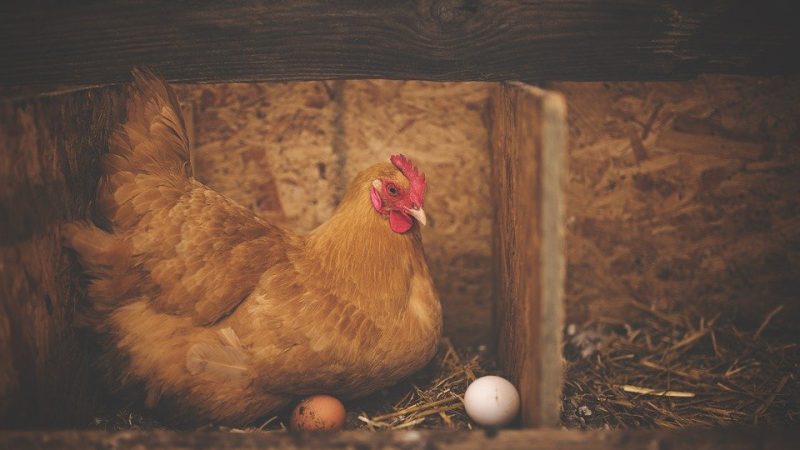The contamination of chicken eggs with fipronil led to a Europe-wide outcry in 2017. Although this specific case was not in compliance with current regulations, other treatments of hatching eggs with hazardous substances are still common. Contaminations of the eggshells with potentially animal-pathogenic microorganisms require fumigation with toxic chemicals for efficient breeding. Researchers evaluated an alternative decontamination method that is based on bacterial metabolites and showed that it is as efficient as conventional methods.
Hatching eggs are often incubated in large quantities in modern hatching facilities that have optimized throughputs and short downtimes. In spite of the automated infrastructure, microbial contaminants pose a high risk for the newly hatched animals and can be easily spread across the whole population. A preventive measure that is currently applied in industrial hatcheries is the fumigation of eggshells with formaldehyde. This substance is a highly efficient decontaminant, but also hazardous for humans, the exposed animals and the environment. ACIB’s researchers evaluated an alternative approach that was developed by the company partner Roombiotic. The start-up company is utilizing diazine molecules from natural origins; especially diazines that are produced by useful microorganisms. Diazines are heterocyclic compounds with two nitrogen atoms. They can be found in various fruits and vegetables and have a characteristic smell that is often associated with roasted coffee or nuts. The efficiency of alkylated diazines upon treatment of hatching eggs was evaluated in a multi-phasic approach that combined cultivation experiments, molecular quantifications as well as imaging techniques. The tested substances have GRAS (generally recognized as safe) status and thus provide a promising alternative for formaldehyde while sufficient decontamination levels can be reached.
The implementation of a microbiome study allowed the researchers to obtain a detailed insight into the structure of the microbial community on the analyzed eggshells. Based on this newly established method, further optimizations of the treatment were facilitated. It was shown that certain process parameters can reduce the efficiency of the decontamination and lead to a shift in the community composition. However, when the decontamination is performed under adjusted conditions, the efficiency is equal to formaldehyde treatments. The new method for industrial hatcheries allows to control Salmonella and other bacterial outbreaks and might soon replace hazardous substances in this application field. Organic hatcheries from different countries have already expressed interest to test the promising alternative in their facilities. Following successful upscaling trials, Roombiotic expects market readiness in the end of 2018.
Peter Kusstatscher, Tomislav Cernava, Stefan Liebminger, Gabriele Berg (2016) Replacing conventional decontamination of hatching eggs with a natural defense strategy based on antimicrobial, volatile pyrazines, Scientific Reports volume 7, Article number: 13253 (2017) doi:10.1038/s41598-017-13579-7
Picture credits: pixabay
